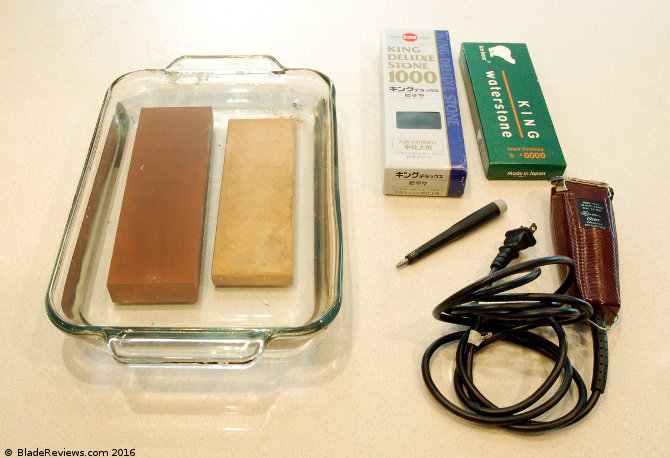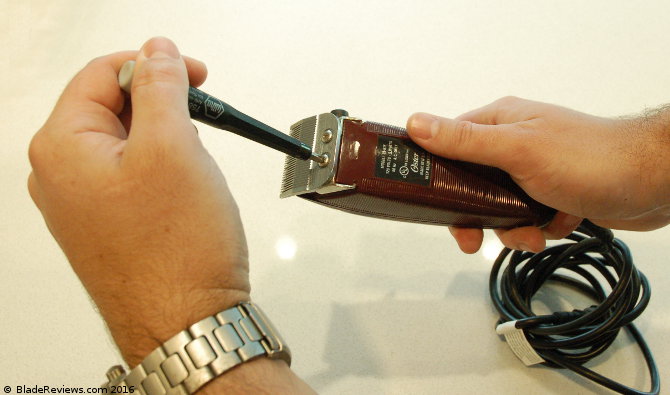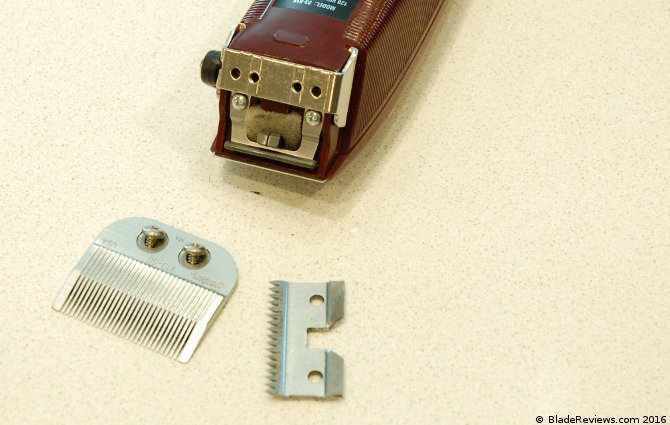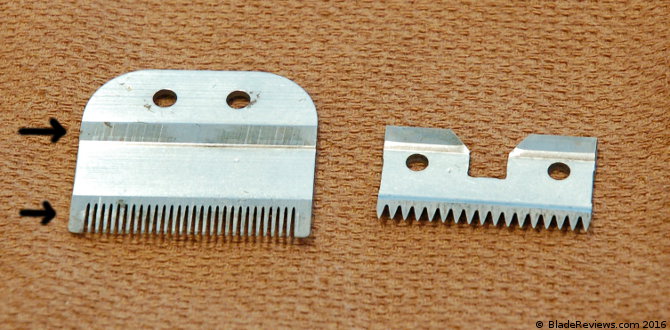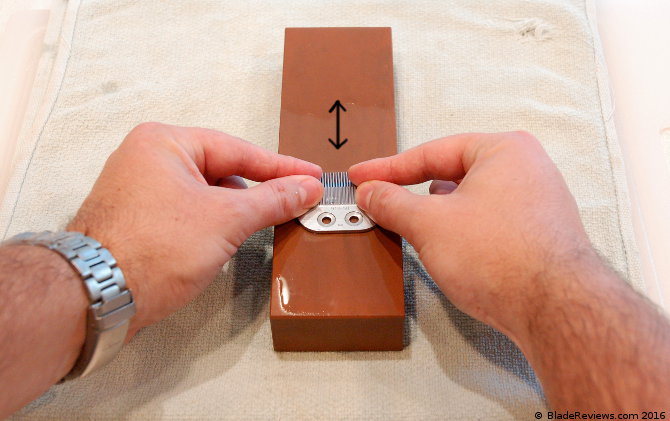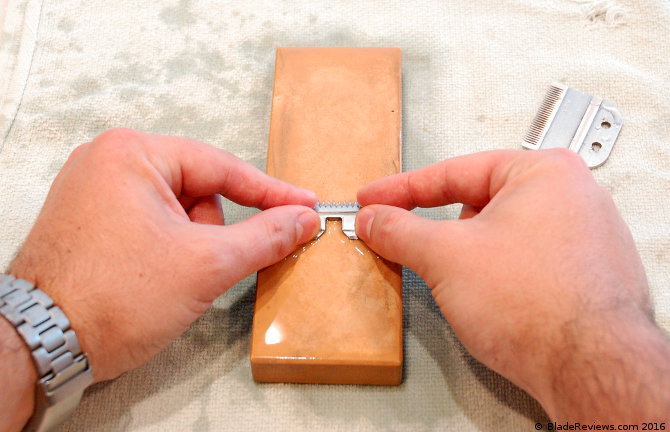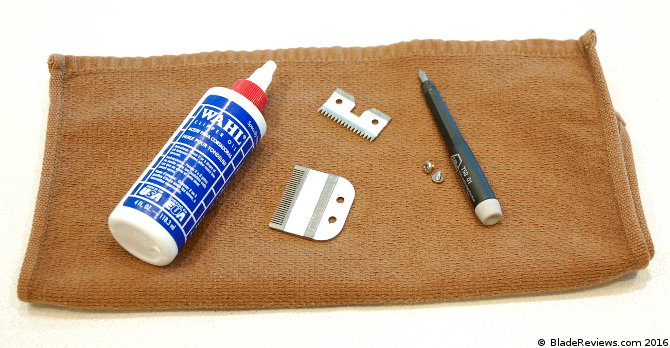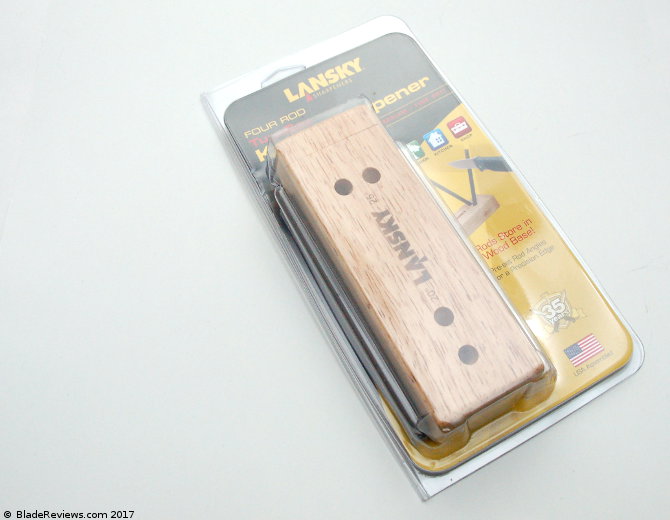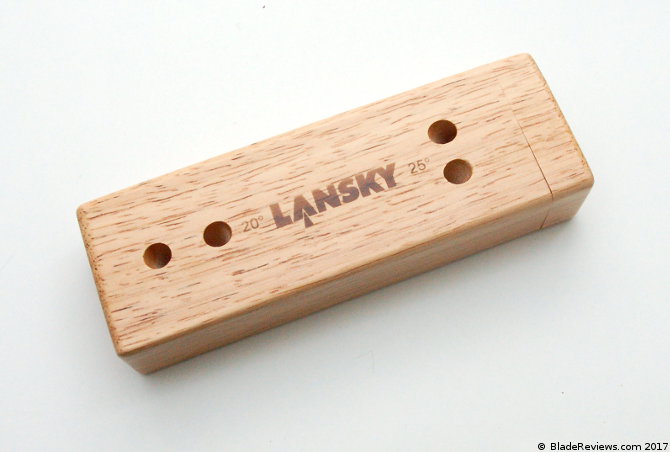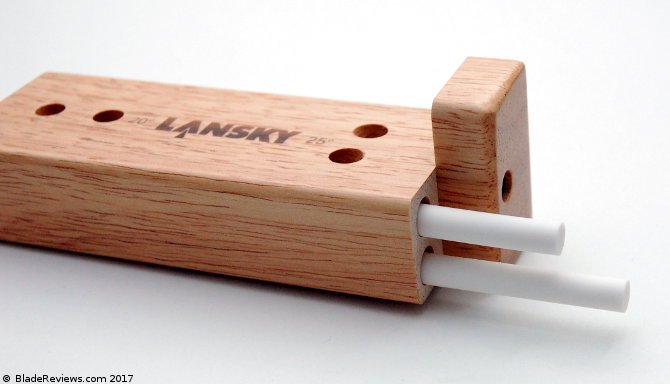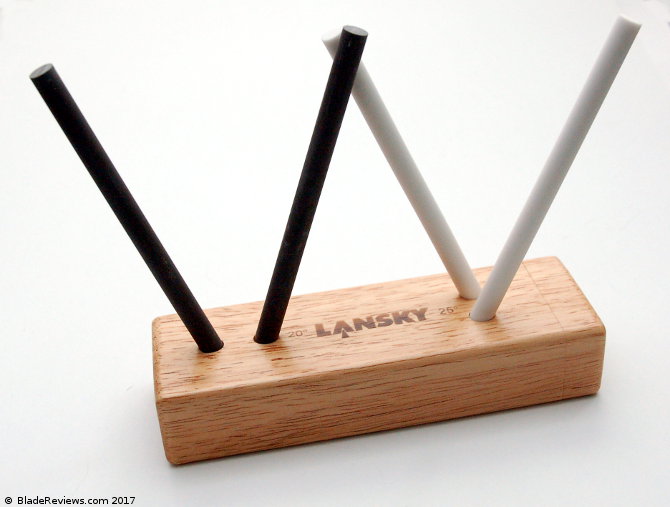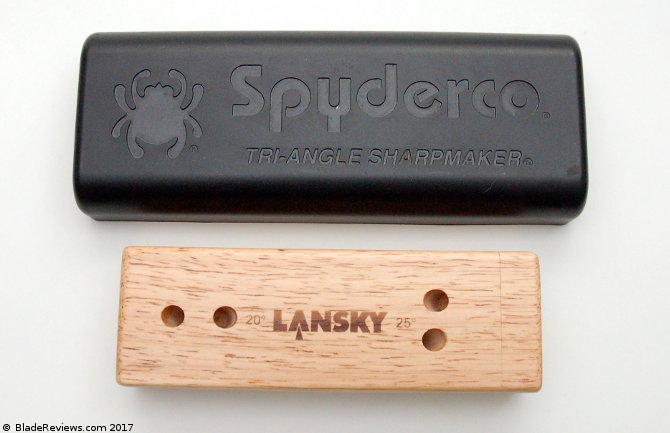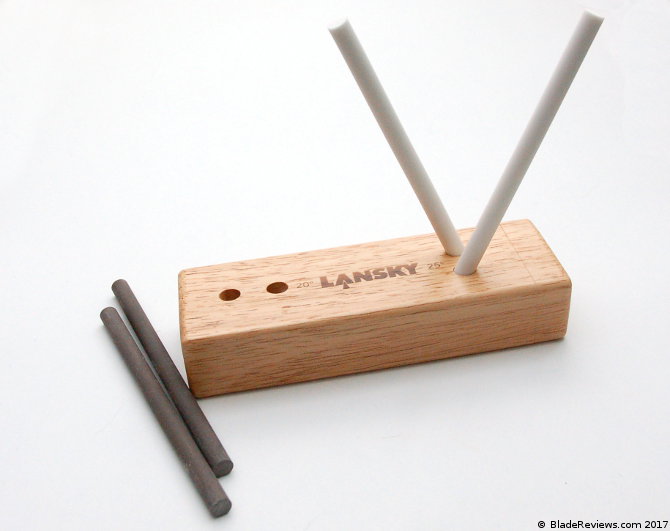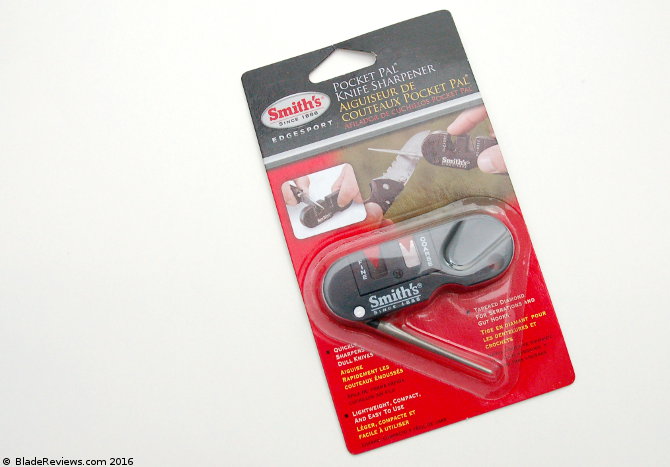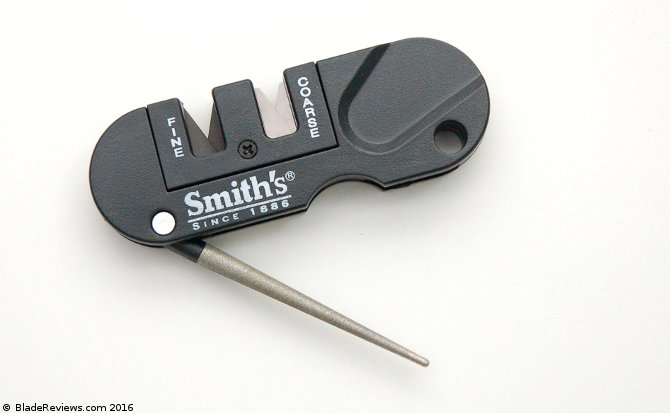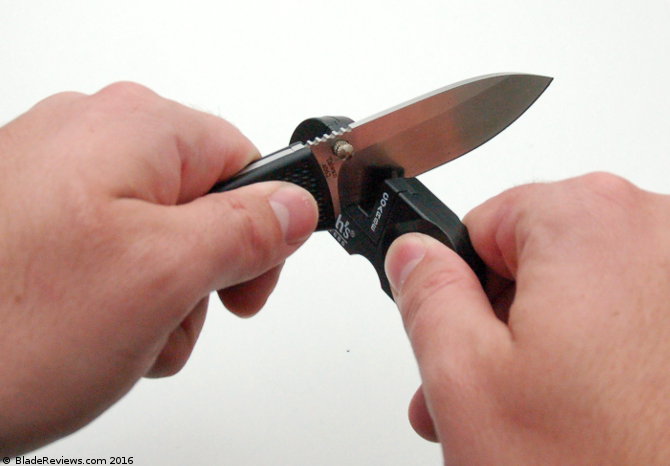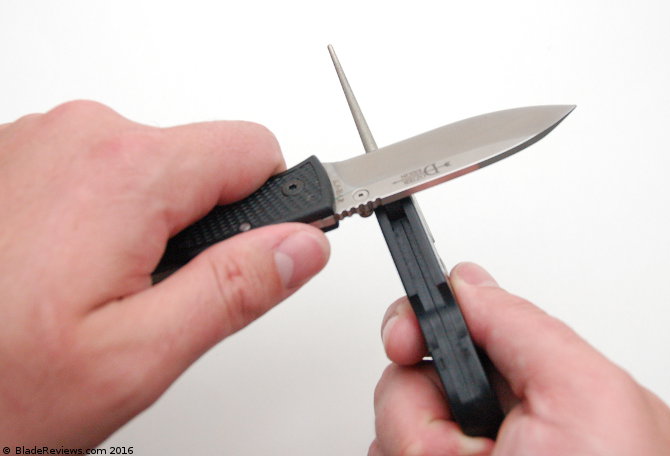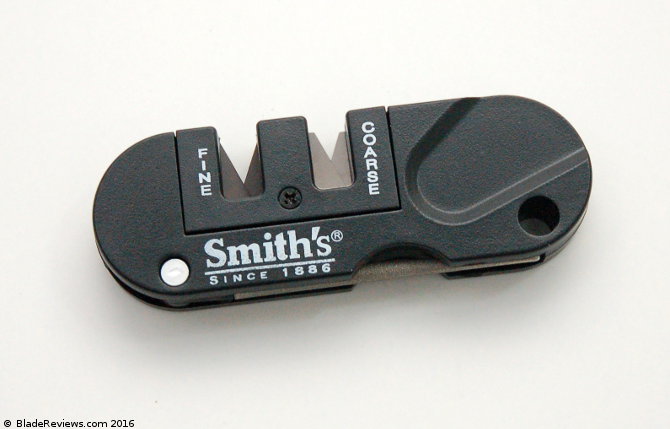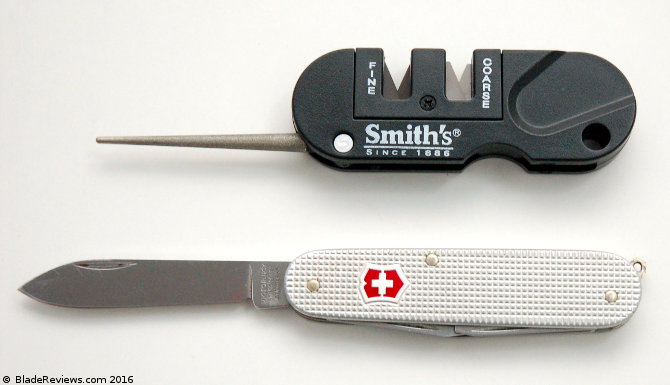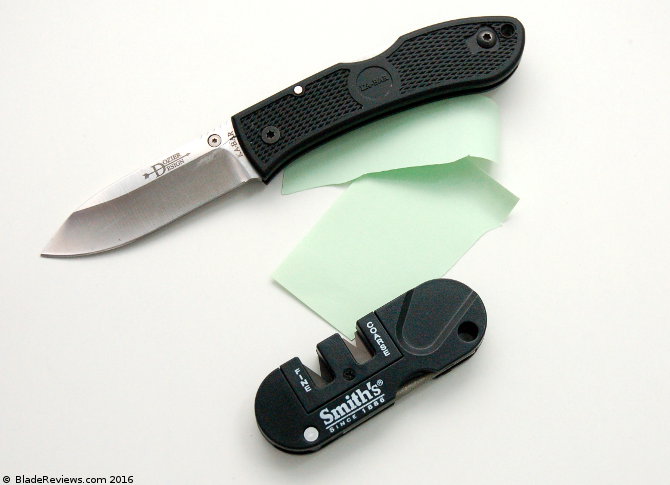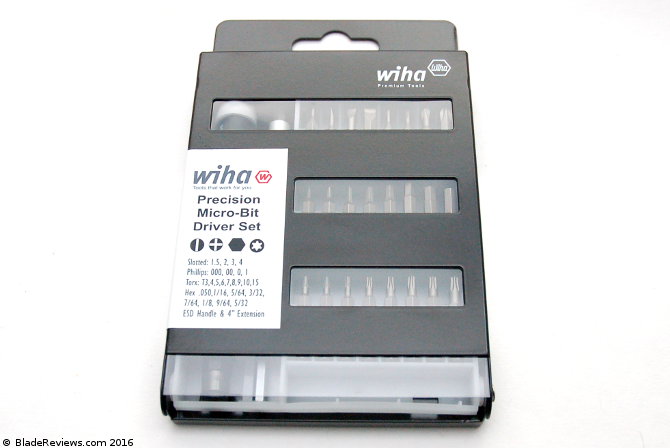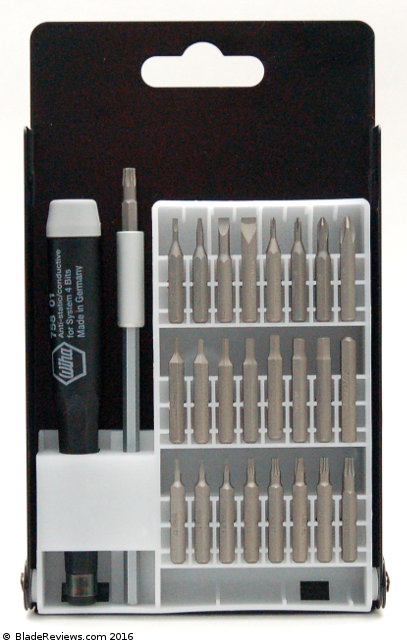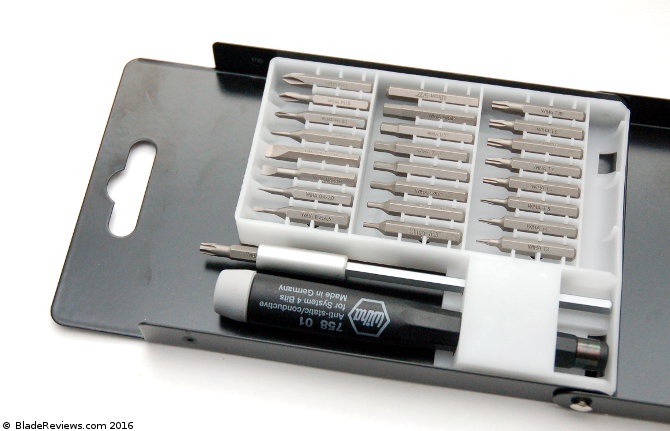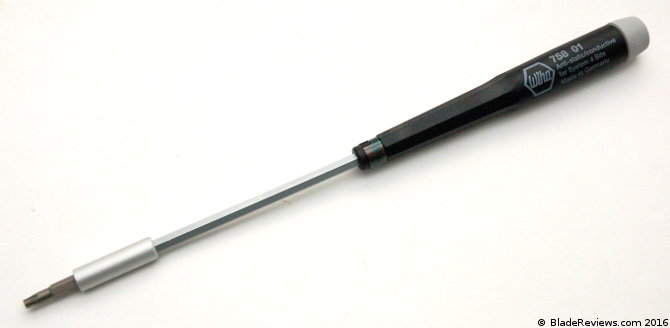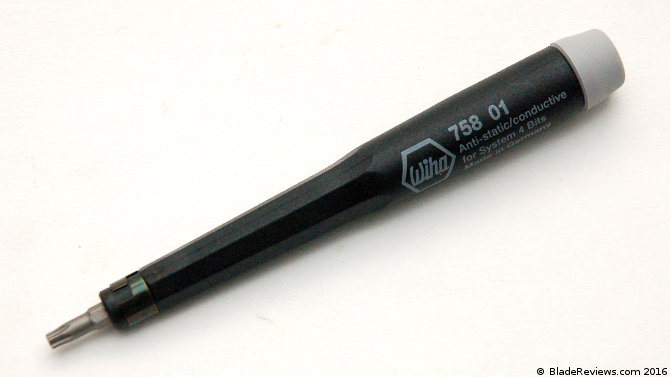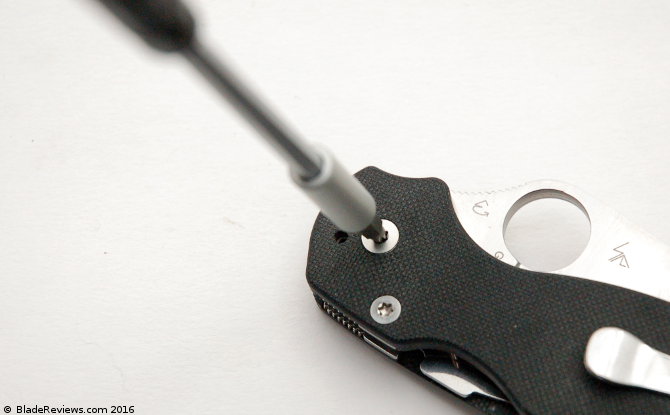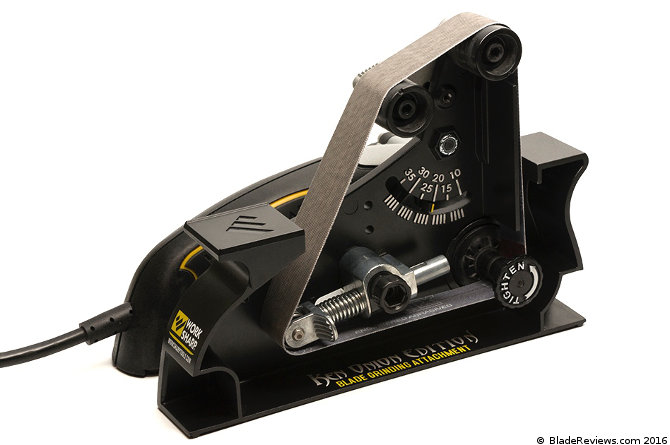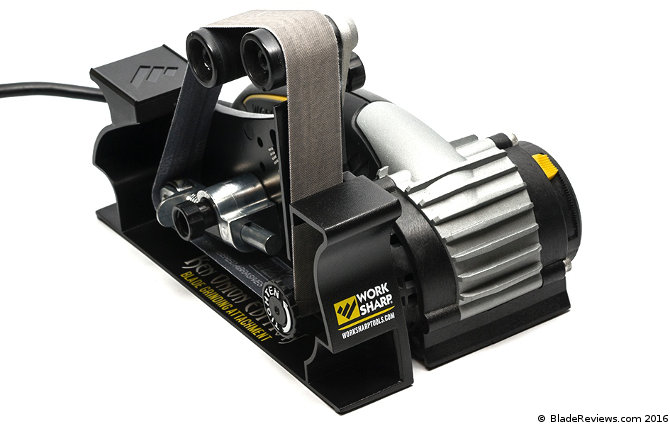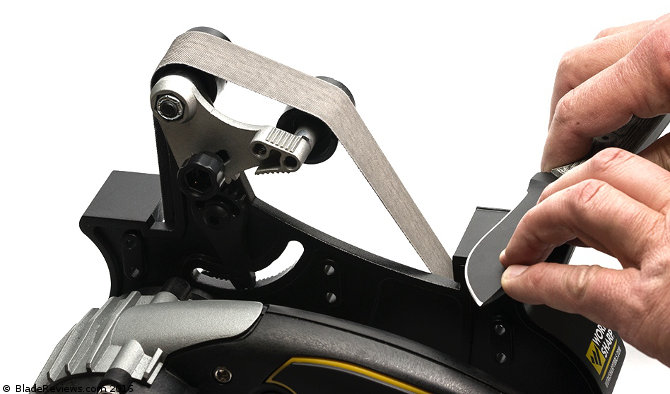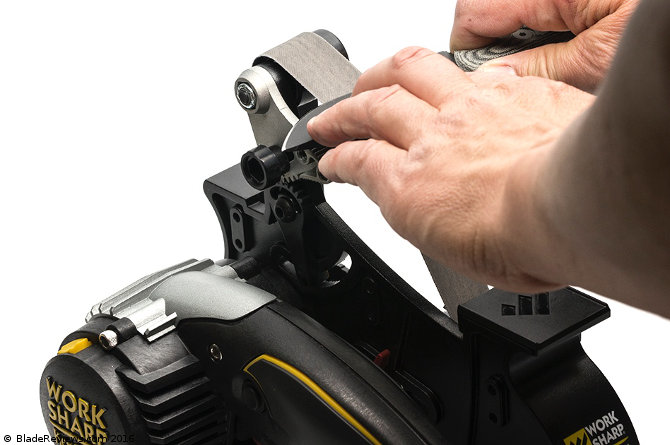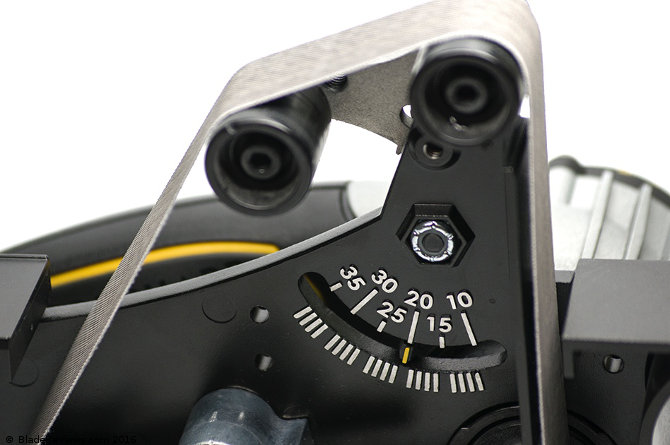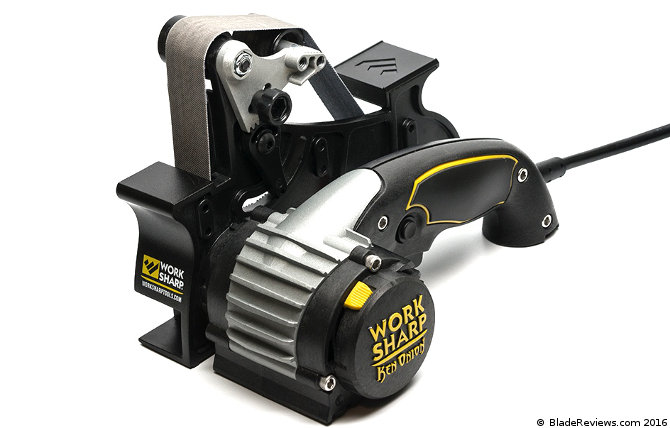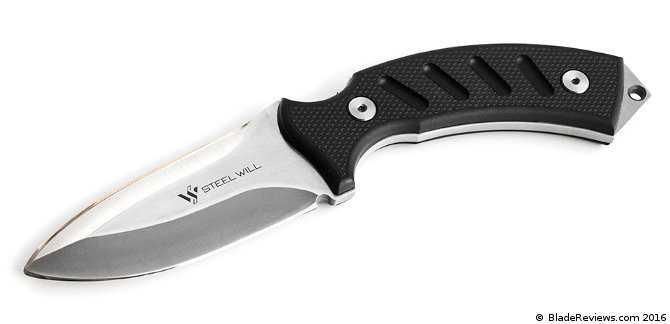Ever since I reviewed the Smith’s Pocket Pal PP1 I’ve been wanting a portable sharpener. Some people refer to these as “field sharpeners,” but since I don’t spend much time in the field, I’ll just say I want something simple, small, and portable. Something that works when space is at a premium. And something durable.
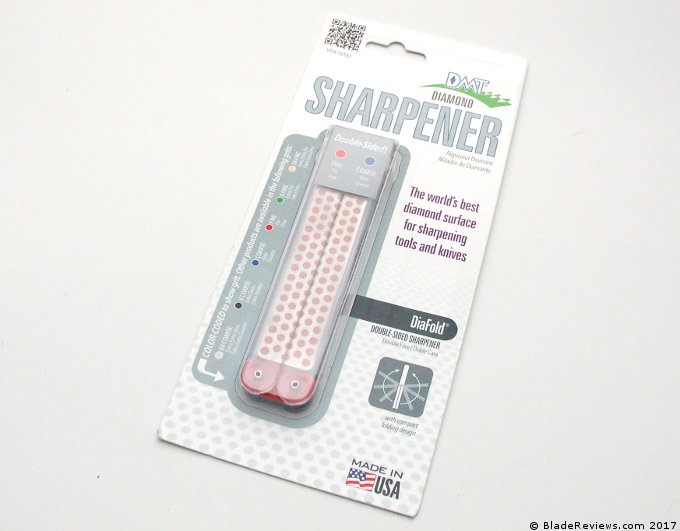
Buy the DMT Diafold at BladeHQ
DMT is the gold standard in diamond sharpeners, and I’d yet to review one, so this little Diafold sharpener seemed like an obvious choice. It’s inexpensive, unobtrusive, yet it folds out into something large enough to use regularly. I picked one up without thinking too hard about it, and used it for several months.
What You Get
The Diafold comes in an annoying thick plastic clam shell pack. Thankfully my Wingman has a cutter designed just for this occasion, so I was able to get at the Diafold without too much trouble. Inside is the sharpener. The instructions are outside. Pretty basic stuff.
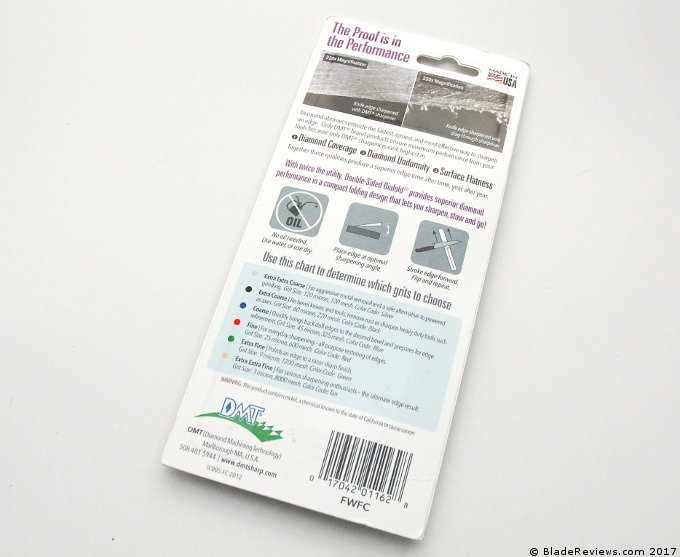
Closed the Diafold is 5″ long by about an inch wide and half an inch thick. The stone itself is 4.33″ x .875″ x .25″ and is encased in two clear rotating plastic arms. It’s like a balisong, although the chance of stabbing yourself is lower and the flipping action leaves something to be desired.
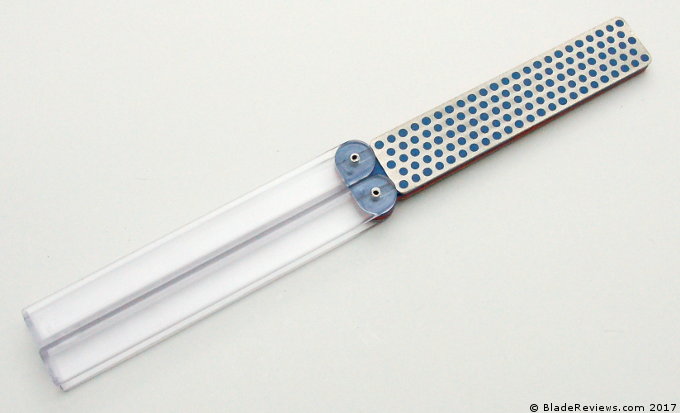
When opened the Diafold stretches out to 9 1/2″. This give you plenty to grip onto as you sharpen your knife.
Use
DMT offers the Diafold in their entire range of sharpening grits: everything from extra-coarse to extra-extra-fine. I selected a coarse and fine grit. I figured the coarse side would be enough to work chips out of blades, while the fine side would leave me with a good working edge. I thought it complimented my Sharpmaker nicely, since I never opted for the diamond stones for that system.
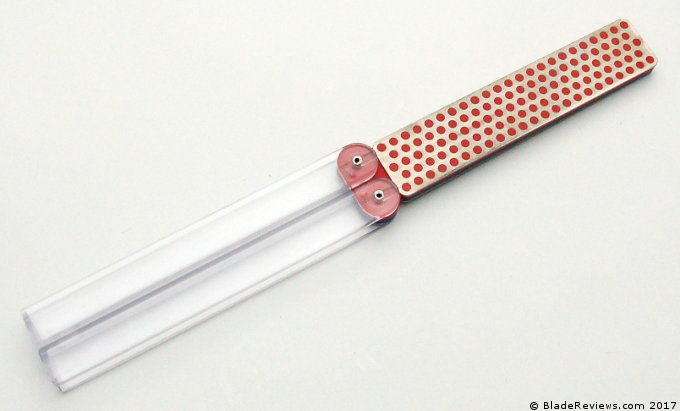
Turns out I made a good choice, as I can use this to bring pretty much anything back to life. While I’m not a professional freehand sharpener, I’ve had a few years of practice now. I can use this tool to get a hair shaving edge on most of my folding knives. It will be impossible for recurves, and I can’t say I’ve tried it on anything like ZDP-189, but it’s great for my EDC rotation, which features a lot of 154-CM, S35VN, S30V, and VG-10. No issues with any of those steels.
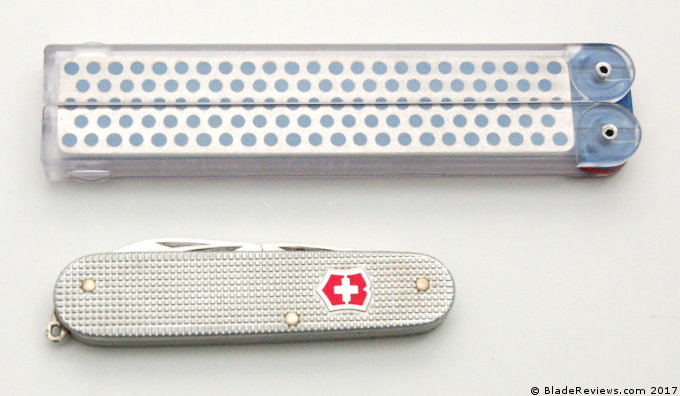
Typically I use this DMT stone without any lubricant, but if you wanted to you could put some water on it. I find a light touch is the way to go with diamond stones. Too much pressure and you risk scraping off all the diamonds. Light even pressure and flipping the blade over every few strokes is the way to go. It won’t take much work with diamond stones to get the desired effect. Let the stones do the work and you are good to go.
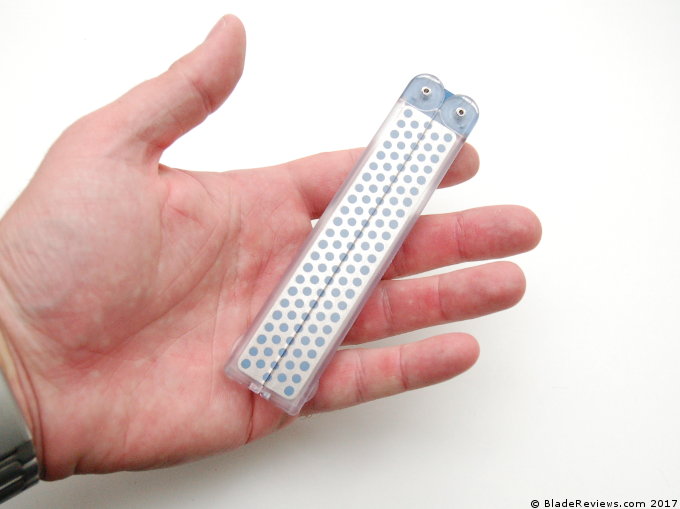
I like how the Diafold folds up into a compact package. I haven’t gone on a hunting trip, or even an extended hike with this sharpener, but it’s lightweight, relatively small, and folds up flat. It easily tucks into a pocket or bag. I suppose you could buy something even smaller, but personally I like having a sharpener big enough to use comfortably.
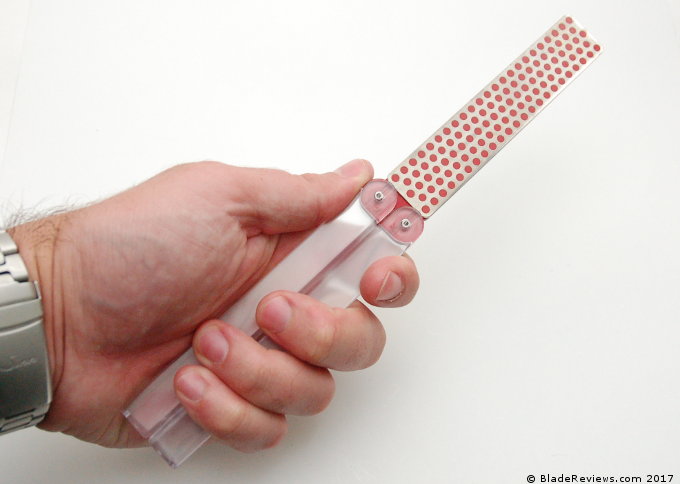
That said, my Diafold spends most of it’s time on my desk. It’s convenient, self contained, and doesn’t take up much space. Most of the time I don’t need anything bigger than this to sharpen my knives.
DMT Diafold Review – Final Thoughts
This is one of my shorter reviews, but that’s not a bad thing. The Diafold is super simple, and equally effective. I paid about $25 for mine on Amazon, which seems kind of spendy for a small simple sharpener, but it’s worth the money to me. DMT makes the best diamond stones in the business and this Diafold is nicely put together. And it’s made in the USA. You get what you pay for. Let’s put it this way, I’d definitely take this Diafold over 5 of those Smith’s Pocket Pals.
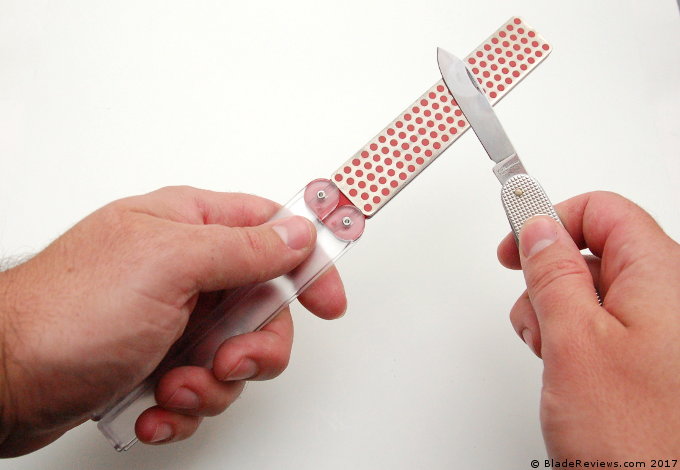
I am considering picking up the extra-fine / extra-extra-fine version too just to see what kind of edge I can get, but I don’t regret the coarse/fine combo. That will be the way to go for most people, but if you buy a couple of them you are looking at a little over $50. About the price of a Sharpmaker. It won’t sharpen serrations or recurves like a Sharpmaker, but it also won’t shatter like a Sharpmaker rod will if you drop it on the kitchen floor. Don’t ask me how I know. If you take care of these DMT stones they should provide many years of service.
I recommend this sharpener to pretty much anyone. I think I found my “field” sharpener, but this type of sharpener intrigues me. I never got in to the big table top sharpeners like the Wicked Edge or Edge Pro. I’d be curious to hear if anyone has a field sharpener they prefer over the Diafold. It might become the subject of my next sharpener review.
- Diamond Knife Sharpener: Offering 2-stage sharpening and a compact design, this lightweight DMT diamond sharpening stone is great for the home, camper, tool box, gardening shed, and more
- Dual-Diamond Stone Surface: Specialized fine diamond (25 micron / 600 mesh) hones any blade or chisel to a razor-sharp edge; Specialized coarse diamond (45 micron / 325 mesh) quickly restores neglected edges
- Portable Knife Sharpeners: Compact, lightweight pocket knife sharpener features convenient fold-and-go handles, which enclose and protect the diamond plate when not in use; Measures 9.5 inches open and 5 inches closed
- Fast & Easy: A micronized monocrystalline diamond surface sharpens edges faster and easier than conventional sharpening stones; No messy oils are needed either — sharpen lapping plate dry or with water
- Made In The USA: Preferred by professionals for their superior quality and versatility, our durable diamond sharpening stones are built to provide years of consistent performance and reliable service
I recommend purchasing the DMT Diafold at Amazon or BladeHQ. Thanks for reading.

